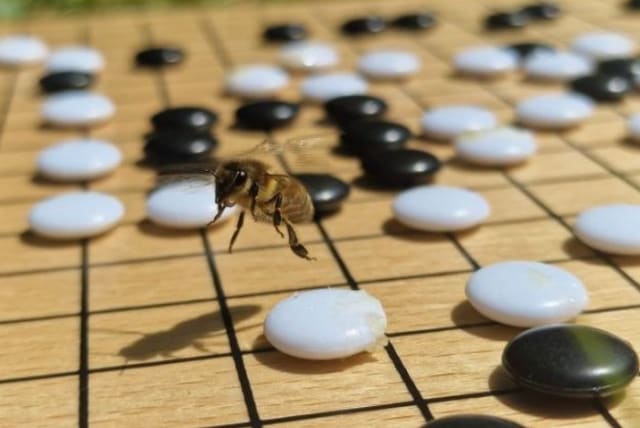Honeybees could inspire future AI with rapid, accurate decision-making - study

With a brain the size of a sesame seed and fewer than a million nerve cells, honeybees may yet help shape the future of advanced, artificial minds.
Honeybees have a brain that is the size of a sesame seed, but that doesn’t mean that they’re dumb.
Scientists at the University of Sheffield in the UK have discovered that the insects are fast and accurate decision-makers when choosing flowers to land on when searching for nectar. They could even inspire the design of more efficient robots and autonomous machines, the researchers suggested, using reverse engineering of the honeybee brain to build robots and autonomous vehicles to see, sense, navigate and make decisions like the bees do.
The study, led by Dr. HaDi MaBouDi. from the university’s computer science department with Prof. Andrew Barron from Macquarie University in Australia, has uncovered the complex strategies that honeybees use to choose what flowers are worth visiting.
Despite this complexity, the researchers figured out how the insects make rapid but accurate decisions about where to forage for nectar.
Published in the journal eLife under the title “How honey bees make fast and accurate decisions,” the study “is inspiring a new generation of robots and autonomous machines that can think like a bee – capable of making fast, accurate and efficient decisions autonomously, the researches said.
The study's methods
They trained 20 bees to recognize five different-colored artificial flowers. Blue ones always contained sugar syrup; green flowers always contained tonic water with a bitter taste that bees dislike; and the remaining colors sometimes held sugar.
The team then introduced the bees to a custom-designed garden where the flowers had only distilled water to test their performance in different scenarios. The researchers filmed each bee then tracked their path and timed how long it took them to make a decision on which flower to visit.
Results showed that if the bees were confident that a flower would have food, they quickly decided to land on it - on average in 0.6 seconds. If they were confident that a flower would not have food, they made a decision just as quickly.
The scientists then built a computer model aiming to replicate the bees’ decision-making process. Upon review, they found the structure of their computer model looked very similar to the physical layout of a honeybee brain.
MaBouDi explained that each time a bee sets out to collect nectar, it must use tiny variations in color or odor to decide which flower it should land on and explore. Each mistake is costly, wasting energy and exposing the insect to potential dangers. To learn how to refine their choices through trial-and-error, bees have tiny brains with fewer than a million neurons – and yet, they excel at this task, being both quick and accurate.
“What we’ve done in this study is reveal the underlying mechanisms that drive these remarkable decision-making capabilities. We can now use these to design better, more robust and risk-averse robots and autonomous machines that can think like bees – some of the most efficient navigators in the natural world, he continued.
Barron added that a robot programmed to do a bee’s job would need the backup of a supercomputer.”
Jerusalem Post Store
`; document.getElementById("linkPremium").innerHTML = cont; var divWithLink = document.getElementById("premium-link"); if (divWithLink !== null && divWithLink !== 'undefined') { divWithLink.style.border = "solid 1px #cb0f3e"; divWithLink.style.textAlign = "center"; divWithLink.style.marginBottom = "15px"; divWithLink.style.marginTop = "15px"; divWithLink.style.width = "100%"; divWithLink.style.backgroundColor = "#122952"; divWithLink.style.color = "#ffffff"; divWithLink.style.lineHeight = "1.5"; } } (function (v, i) { });

